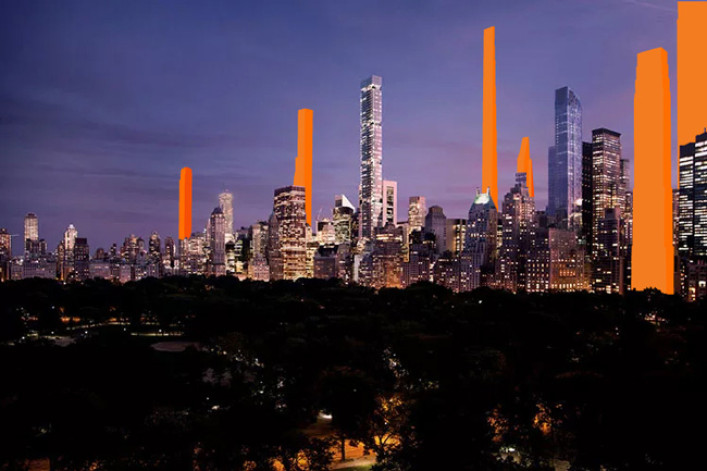If you live in one of these neighborhoods, a "supertall" building could be coming soon

No, you're not imagining it: The city's buildings are getting taller, with many new and upcoming projects topping 1,000 feet high and 50 stories (the New York Times estimates a couple dozen are either under construction or in planning stages). And while said skyscrapers may translate into great views for those living inside, they can mean obstructed views and lots of shade for those of us hanging out below.
At least that's according to the Municipal Art Society of New York, which recently updated their Accidental Skyline report, which, in 2013, uncovered the zoning and transparency shortfalls of supertall buildings. Back then, the shiny towers were clustered by Central Park, but now the trend seems to be expanding to other neighborhoods.
And MAS took a look at neighborhoods that are ripe for supertall developments, i.e. those with permissive zoning and enough available, unused air rights. They are: 125th Street in Harlem, Midtown, Hudson Yards, Flatiron, Sutton Place and Downtown Brooklyn.
They also "corrected" advertisements for some of the new, 1000-plus foot buildings to show the other cloud-reaching towers nearby.
MAS has called for a temporary moratorium on towers over 600 feet that haven't gone through public review. And for 2016 (the 100th anniversary of the original zoning code), they're urging City Hall to develop new zoning regulations.
“Developers are only playing by the rules provided to them by the City government, which in some cases are more 50 fifty years old and woefully outmatched by the realities of city-building today,” executive vice president Mary Rowe said in a statement.
Take a look at the map below to see if a supertall tower is likely to come to your area.
Related:
Fun Tool: BuzzBuzzHome made an interactive map of new developments
Air rights map lets you know if developers may be headed for your neighborhood
























